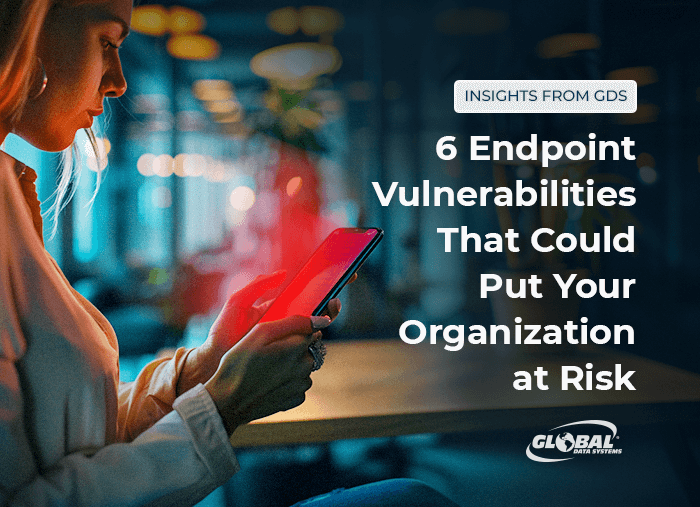6 Endpoint Vulnerabilities That Could Put Your Organization at Risk
Endpoint devices facilitate remote and mobile work by allowing users to connect to the corporate network from almost anywhere. That also makes them enticing targets for malicious actors.

With users operating beyond traditional workplace security perimeters, endpoint devices are subject to surging levels of attacks. More than two-thirds of companies say the frequency of endpoint attacks is increasing and that they have been compromised by one or more such attacks over the past two years.
Now that remote, mobile and hybrid work is a permanent fixture in most organizations, endpoint security has become a critical focus. Here are some of the major endpoint vulnerabilities that should be evaluated and addressed.
1. Lax End-User Security
Surveys consistently show that remote users engage in a broad range of dicey behaviors that increase risk. Most say they rarely update their applications or operating systems, frequently let family members use business devices for personal activities, reuse passwords, download rogue applications and more.
Researchers say users assume their personal devices are safe, making them more likely to open malicious emails, text messages and links. In the 2023 State of Hybrid Work and Browsing Security Survey, 13 percent of remote workers admitted they had fallen victim to a phishing attack.
More than two-thirds of companies say the frequency of endpoint attacks is increasing.
2. Inadequate Security Products
Traditional antivirus solutions and endpoint detection and response (EDR) products miss an average of 60 percent of endpoint attacks, according to one study. The solutions largely depend on signature- and rules-based defenses that look for known patterns of bytes, functions, hashes or other traits that have been previously identified and indexed as malware. However, experts believe most malware variants now have none of those traditional characteristics.
3. Poor Visibility
Although most threats originate at endpoints, one study finds that almost three-quarters remain undiscovered until they have moved through the network and onto a server. Even then, it may take months or longer to discover them. That suggests a lack of visibility into what is happening earlier in the threat chain. In fact, a separate study finds that about a third of IT administrators don’t know how many endpoints are in use in their company.
4. Consumer-Grade Devices
Remote and mobile employees often use personal, consumer-grade devices that lack the security features of business-class technologies. An off-the-shelf wireless router typically won’t include features such as integrated firewalls, strong encryption, content filtering and network access controls. Consumer-grade laptops and tablets often come loaded with unnecessary software — typically referred to as bloatware or junkware — that can create security and privacy issues. Some of these applications install their own root information, making the machine more vulnerable to malware and other attacks.
5. Software Overload
The average endpoint device is loaded with 96 unique applications, including 13 mission-critical apps. That means a compromised device could expose a great deal of sensitive data. Worse yet, many of these apps are downloaded by users without the knowledge or consent of the IT team. This can often result in overlapping apps designed to perform the same task, which can lead to conflicts that create security gaps.
6. Unsecured APIs
Virtually all mobile applications use APIs to connect with other applications and services, but they rarely have any type of built-in security. Hackers can manipulate APIs to gain access to user data, inject malicious code into back-end servers or redirect users to malicious sites. Gartner analysts predict compromised APIs will soon become the most common attack vector.
Implement Proven Solutions to Mitigate Endpoint Vulnerabilities and Protect Your Data
Although remote and mobile work improves flexibility and agility, it has also brought a surge in endpoint security threats. In our next post, we’ll discuss some of the products and processes you can implement to reduce the risk.
Benefits of Managed IT Services from Global Data Systems
- Strategic Managed IT: We help you solve your technology related business problems.
- Connectivity: We get you reliable, secure connectivity anywhere in the western hemisphere in 48 hours.
- Support: When you need help simply call our 24x7x365 support number.
- Billing: Instead of managing hundreds of vendors - get one, easy to read bill from GDS.
Contact Managed Services Provider, Global Data Systems >
